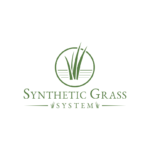Your Artificial Grass

While most home and business owners associate artificial grass with being a durable and long-lasting replacement for traditional landscaping, we often tend to expose the alternative to hazards that could significantly decrease its service life. We all want our investment to last as long as possible so what is acceptable and what isn’t acceptable to be placed on or around our artificial grass? Well today, we are going to be outlining a few things that you should avoid when you have synthetic grass down below! Well, let’s get started!
Harsh Chemical Avoidance
While we want to make sure that our grass is clean and properly taken care of and synthetic grass is a strong and resilient material made of nylon, polyurethane, polypropylene or even a mixture of all three, it doesn’t mean that you will never have to worry about your grass become stained or discolored. To make sure that your grass keeps its green and natural appearance for as long as possible, there are a few materials that you should keep away from the grass. A few of these materials include gasoline, oil-based paints or turpentine products. These chemicals can permanently stain or discolor your grass and if you had your grass professionally installed or bought it from a reputable distributor, synthetic grass that has been exposed to harsh chemicals could have their warranty void!
Fire/Heat Control
One of the most popular structures that any homeowner can put into their back yard is a furnace or firepit. While these structures add depth, warmth, and versatility to a backyard, they can cause serious problems for your artificial grass. While artificial grass isn’t a flammable material, its plastic-like chemical composition will wilt or melt when exposed to high heat. When you are planning on installing a fire pit in the backyard, make sure to have a hardscaping buffer between the fire pit and the grass. with materials like brick, concrete or natural stone. This will make sure the heat from the structure won’t damage the grass, hot coals have no chance of making contact and hot grease or food from BBQing on the pit won’t end up on your grass. When working with high heat structures and artificial grass, we urge you to ask the assistance of a professional contractor to know exactly how big of a buffer you need.
Avoid Punctures
A major hazard that artificial grass has to face is the chance that the mess holding the grass together gets punctured. For most homeowners, they think that no punctures mean no swing sets, volleyball courts or decorating for the holidays but this is all still possible by buying materials and structures that don’t use stakes to penetrate into the ground. While using these options is still feasible, you will want to make sure you consult a professional that can make sure the grass isn’t affected by the process of puncturing to insert stakes or poles. Some of the best ways to avoid punctures are removing debris, being careful with gardening equipment and removing sharp twigs or tree branches. By keeping your synthetic grass puncture-free, you are keeping it in warranty.



